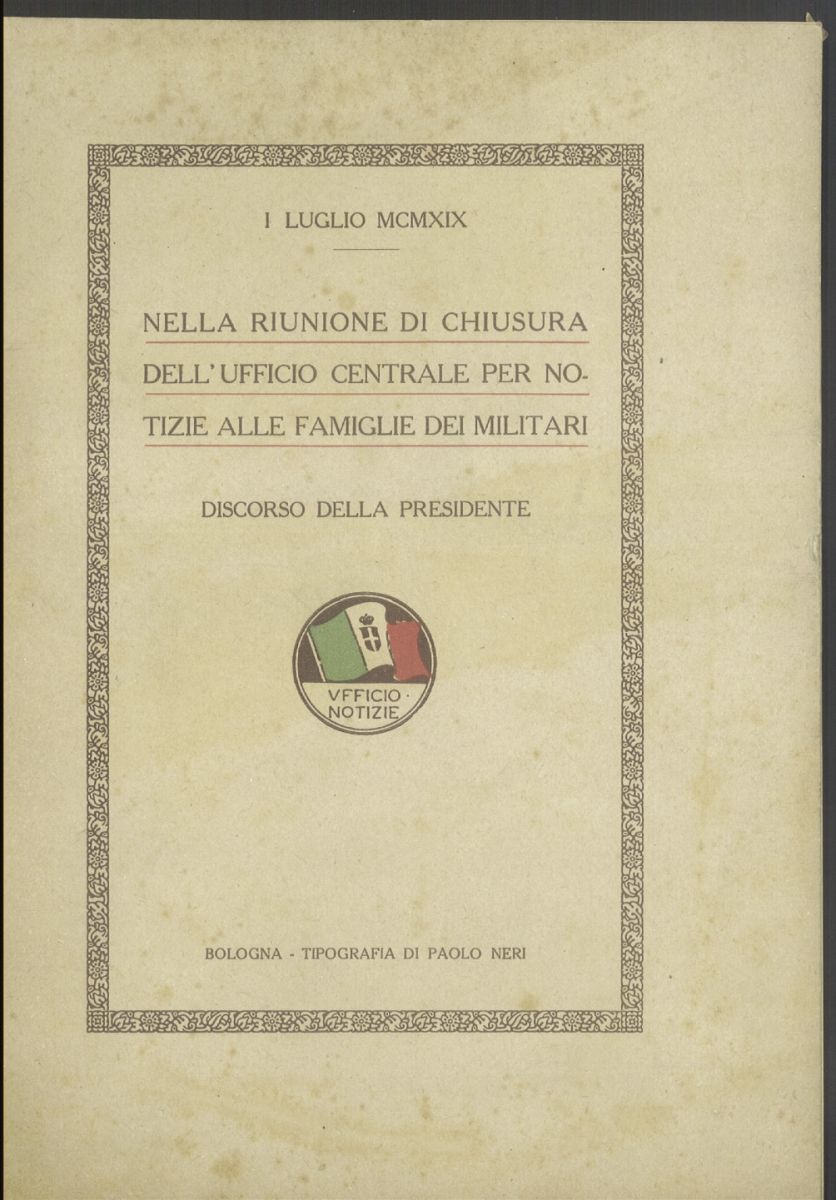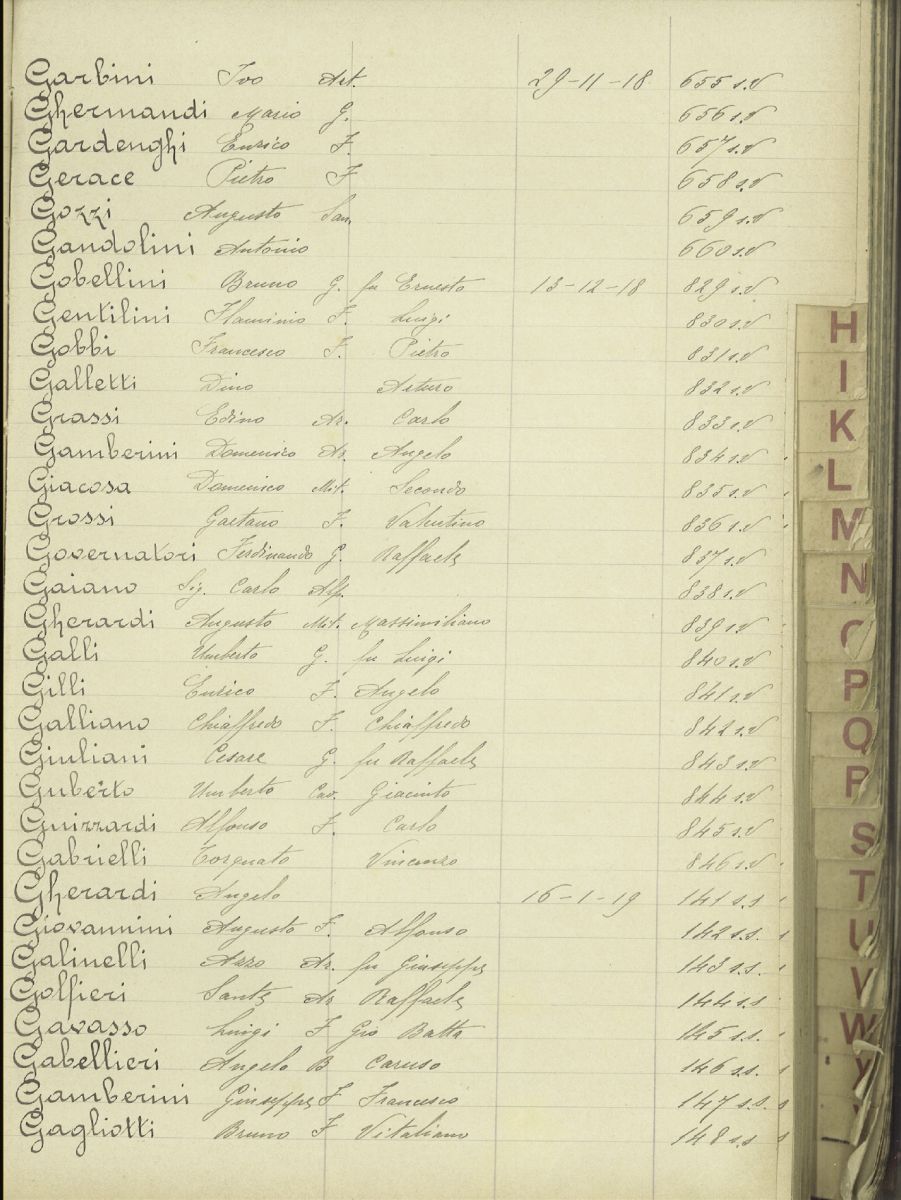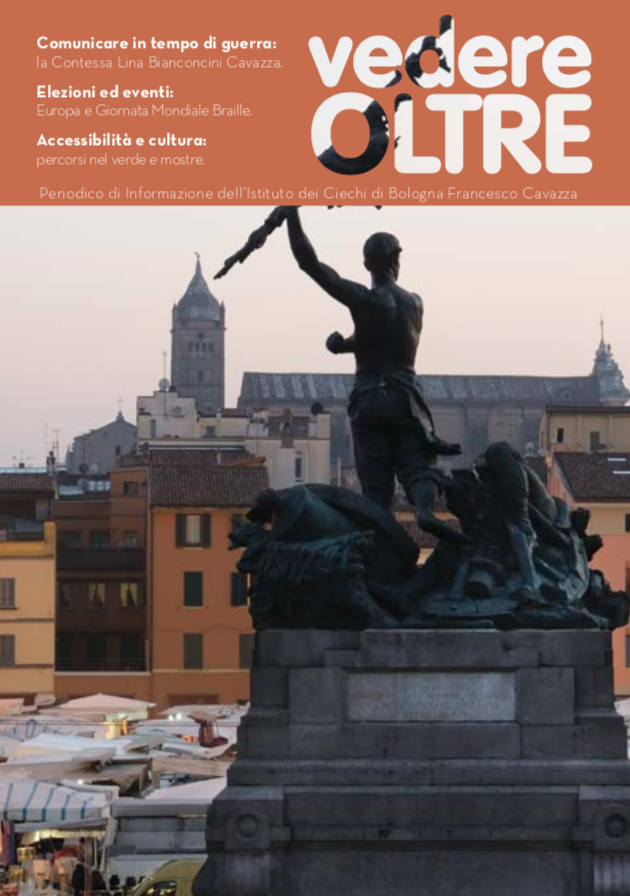The Ufficio Centrale (News Office) for the families of soldiers in the First World War was founded on the initiative of Countess Lina Bianconcini Cavazza who, in June 1915, established this important instrument of connection between the Ministry of War and the families of soldiers on the frontlines. Bologna became the city of the operational headquarters at the national level, located on the first floor of the building owned by the Cavazza family on Via Farini and then moved to the Post Office building on Piazza Minghetti. The operation was funded by ministries, savings banks, chambers of commerce, but also by committees, and local and private administrations. The Bolognese Electricity Company provided free lighting for four years, while the Ministry of Posts, in addition to the premises free of charge, provided an exemption from postal charges. The News Office was officially recognized in October 1915. Over the years, it managed to coordinate more than 8,400 local offices, a greater number than those of the municipalities, from large cities to remote villages in the Alps and on the Apennines, counting on an "army" of about 25,000 volunteers all over the country.
As a testament to the sense of solidarity that animated the "visiting ladies" in collecting the news, the symbol of the News Office bore the inscription, "Pietà non di fortezza ignara." The amount of information sorted was so impressive that at the end of the activities the general archives contained more than 12 million news from the front, from the army's mobilized bodies and military hospitals. Among the archived documents are also letters from soldiers who wrote to their loved ones to provide solace and news of their situation.

At the end of the war, the General Archives were handed over to the National Committee for the History of the Risorgimento as a solemn testimony of one of the great virtues of our people, that of feeling deeply, in our soul, the bond of the family, a perennial memory preserved in the archives of the Nation. The Bolognese documentation was entrusted to the Museum of the Risorgimento and then to the municipal historical archives, making this important historical collection accessible to citizens and scholars. With the Centennial of the First World War, the municipal historical archives were engaged on several fronts. Numerous studies were carried out on what is called the protocols the "European war" and the consequences on the city, declared immediately as a war zone. The first socialist mayor elected in the administrative elections of June 1914, Francesco Zanardi, committed himself to guarantee the citizens the best living conditions for those who remained to resist, especially those from the poorest social classes. During the war, the civil society faced problems related to supply rations, the education of children, the work of women who replaced the men who left for war, assistance, as well as culture and the opening of libraries in the neighbourhoods of new workers. The municipal council expressed its closeness to Bolognese soldiers on the frontlines, reassuring the administration's commitment in protecting their loved ones and the social, civic and monumental and historical fabric of the city. In this context, the News Office for military families assumed a fundamental role in transmitting between Bologna and the Ministry of War the news of its citizens fighting on the front. Countess Lina Cavazza promoted the initiative while the Bolognese section was managed by Vittoria Garabelli Silvani in the headquarters of the Eden Theatre on Via dell'Indipendenza and later on Piazza Calderini, 4. The archives of the Bologna Section of the period from June 1915 to July 1919 are structured in series. The main archives are composed of an estimated 74,000 military files from soldiers on the frontlines, of various colours and types, collected in 93 envelopes reorganized in alphabetical order according to the first three letters of the surname. White files are a collection of information from other sections, from the "visiting ladies", hospitals, districts and military depots. Pink and red files refer to requests made by families; green files refer to information on discharges of soldiers from the 23 Bolognese hospitals; grey files are about missing and captured soldiers. Some have in attachment postcards, correspondence attesting to the referral of requests to the various competent offices, letters from private individuals, associations, municipalities and others. The archives of the deceased Bolognese and those killed in Bologna are light blue with a black stripe in the top centre indicating the date, place and cause of death. They are collected in 27 envelopes and correlated with three registries that allow searches by name. They give the surname and name of the soldier, the paternity, the date of arrival of the news, as well as the number and the series for finding the file. The file on the deceased in Bologna keeps the individual files collected in three envelopes concerning other names of residents who died in Bologna and in the province.

The inventory is completed by an envelope containing files and registries and a second envelope containing the contemporary separators of the main archives.
A beautiful speech by President Lina Bianconcini Cavazza before national and city authorities officially closing the News Office on July 1, 1919, in a solemn gathering ending the long collaborative work, which needed to continue for the search of the missing. The closing speech contained the history of the institution, giving considerable importance to those women who worked with patience and love to give their support to their brothers in arms. Inventory of the News Office's Archives for military families. Bologna Section 1915-1919 curated by Elisa Erioli.





.png)